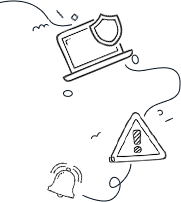Introduction
Did you know that over 2.3 billion people have decided to trust the cloud with their personal data? It’s like storing your secrets in the attic of the world, but with more Wi-Fi. Not only can you access your data from anywhere (so long as you have internet), but working with your coworkers has never been easier — as long as they don’t forget their passwords, of course.
Cloud storage is the superhero of data protection, offering robust backup and recovery options. Think of it as your data’s safety net, ready to catch it when it falls — whether it’s due to hardware failure or your cat deciding to take a stroll across your keyboard.
However, while the cloud can save your data from physical disasters, it’s still open to digital mischief. Yes, hackers are like those pesky squirrels who rummage through your trash cans — and they can cause quite a bit of chaos!
How Do Hackers Exploit Cloud Storage?
Even with extensive security measures, no cloud system is completely foolproof. Think of it like a castle with a moat — even the best castles can be breeched. Here are some less-than-turtley-strong ways that hackers can compromise your cloud data:
- Weak or reused passwords. Just like a bad hair day, using weak or reused passwords can invite unwanted attention. Hackers love to exploit these through brute force attacks or those oh-so-crafty phishing scams. Remember, password123 is not going to cut it!
- Data breaches. Sometimes, even the best security can’t prevent breaches. It’s like leaving your cookie jar open in a room full of toddlers — someone’s bound to get in and make a mess.
- Vulnerabilities in cloud infrastructure. Hackers are like those people who find the one gap in your fence and slip through undetected. They can take advantage of vulnerabilities in the cloud infrastructure or even user errors to sneak in.
According to recent statistics, a whopping 80% of companies experienced at least one cloud security incident in the past year. To keep your data secure, embrace strong, unique passwords, enable multi-factor authentication, and stay on guard against phishing attempts — no, not the fishing trips you’ve been dreaming of! Regularly update your security settings and keep an eye out for potential threats to keep your data safe.
Protecting Your Cloud Data
To ensure your files are cozily snuggled in safety, consider adopting some of these best practices for cloud security. Trust me, your data will thank you!
First, you need to know what security measures your cloud provider has in place. It’s like assigning chores — some are on them, and some are on you! Make sure your data storage has encryption services to scramble your data into unreadable tokens. Don’t worry, your data won’t be trading its comfort for extra security—it just won’t be legible without proper login credentials.
Additionally, implementing multi-factor authentication when logging in is a must. Biometric MFA and authentication apps are like secret handshakes that require you to show your unique personal features — no, not your dance moves, but rather your thumbprint or that random code they text you. These methods significantly boost your data’s privacy.
Conclusion
By following these practices, you can enhance the security of your cloud data like a pro. Sure, the cloud isn’t completely invincible, but like a well-trained guard dog, encrypted and remote storage systems can protect your files against physical calamity and many cybercriminal activities.
The more you learn about the cloud and its vulnerabilities, the better equipped you’ll be to shield your systems and data. Stay informed, stay clever, and above all, stay cybersecure — because no one wants to be that person who loses their data to a squirrel with a hacking degree!
The post What Are The Risks to Your Cloud Data? appeared first on .




